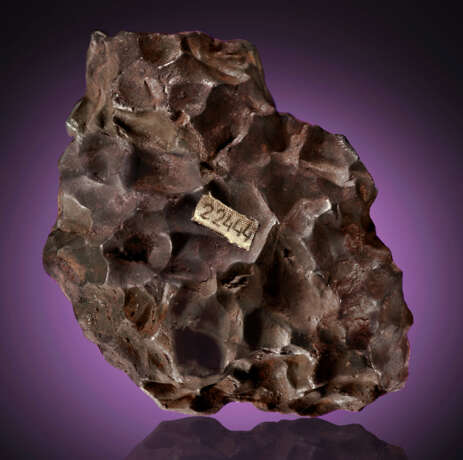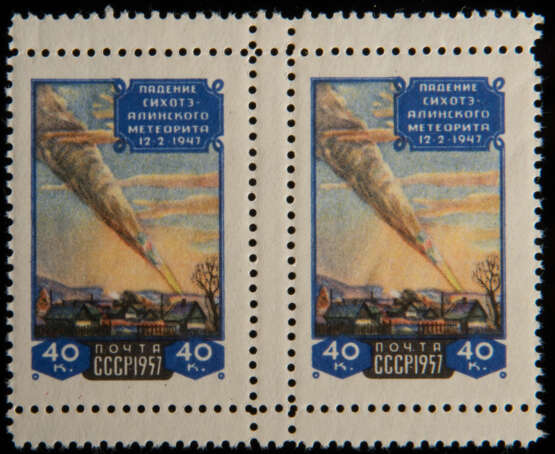ID 716448
Lot 63 | SIKHOTE-ALIN METEORITE FROM THE SOVIET ACADEMY OF SCIENCES COLLECTION
Valeur estimée
$ 10 000 – 15 000
There are two types of Sikhote-Alin meteorites: the jagged and twisted specimens that resulted from the low-altitude explosion and the more desirable, gently scalloped specimens that broke free of the main mass in the upper atmosphere and were sculpted by frictional heating during their plunge to Earth. This is an example of the latter. This meteorite is blanketed with scores of regmaglypts (thumbprint-like indentations produced during a meteorite’s blazing plunge through Earth’s upper atmosphere). Patches of fusion crust — another product of frictional heating in the atmosphere — are also in evidence. Wrapped in a variegated cocoa oxidized patina, this is the result of laying in moist forest ground until its recovery. This is a rare offering of a meteorite with notable provenance originating from one of the most massive meteorite showers since the dawn of civilization.
Christie's would like to thank Dr. Alan E. Rubin at the Department of Earth, Planetary, and Space Sciences, University of California, Los Angeles for his assistance in preparing this catalogue.
112 x 155 x 89mm (4.5 x 6 x 3.5 in.) 4.429 kg (9.75 lbs)
Unmounted stamps 37 x 25mm (1.5 x 1 in.)
| Adresse de l'enchère |
CHRISTIE'S 8 King Street, St. James's SW1Y 6QT London Royaume-Uni | |
|---|---|---|
| Aperçu |
| |
| Téléphone | +44 (0)20 7839 9060 | |
| Commission | see on Website | |
| Conditions d'utilisation | Conditions d'utilisation |




